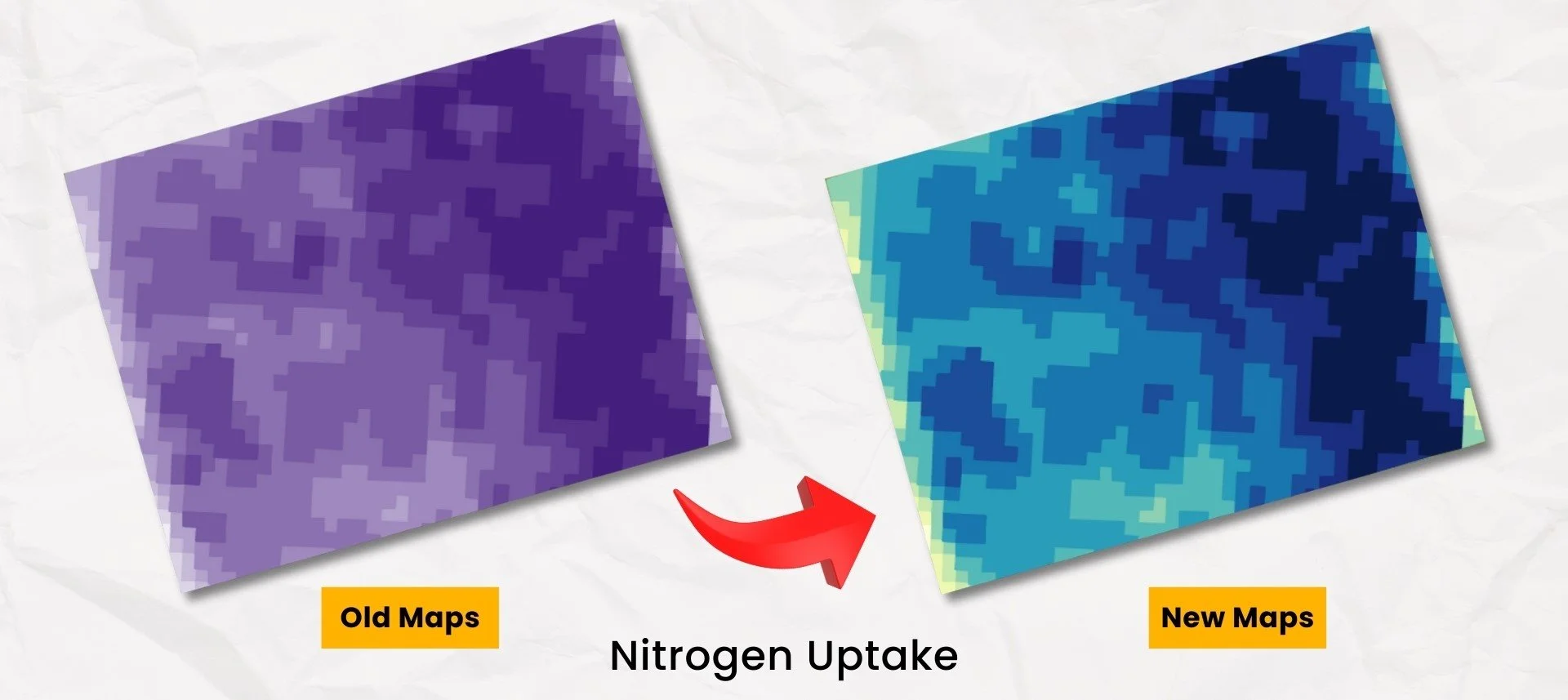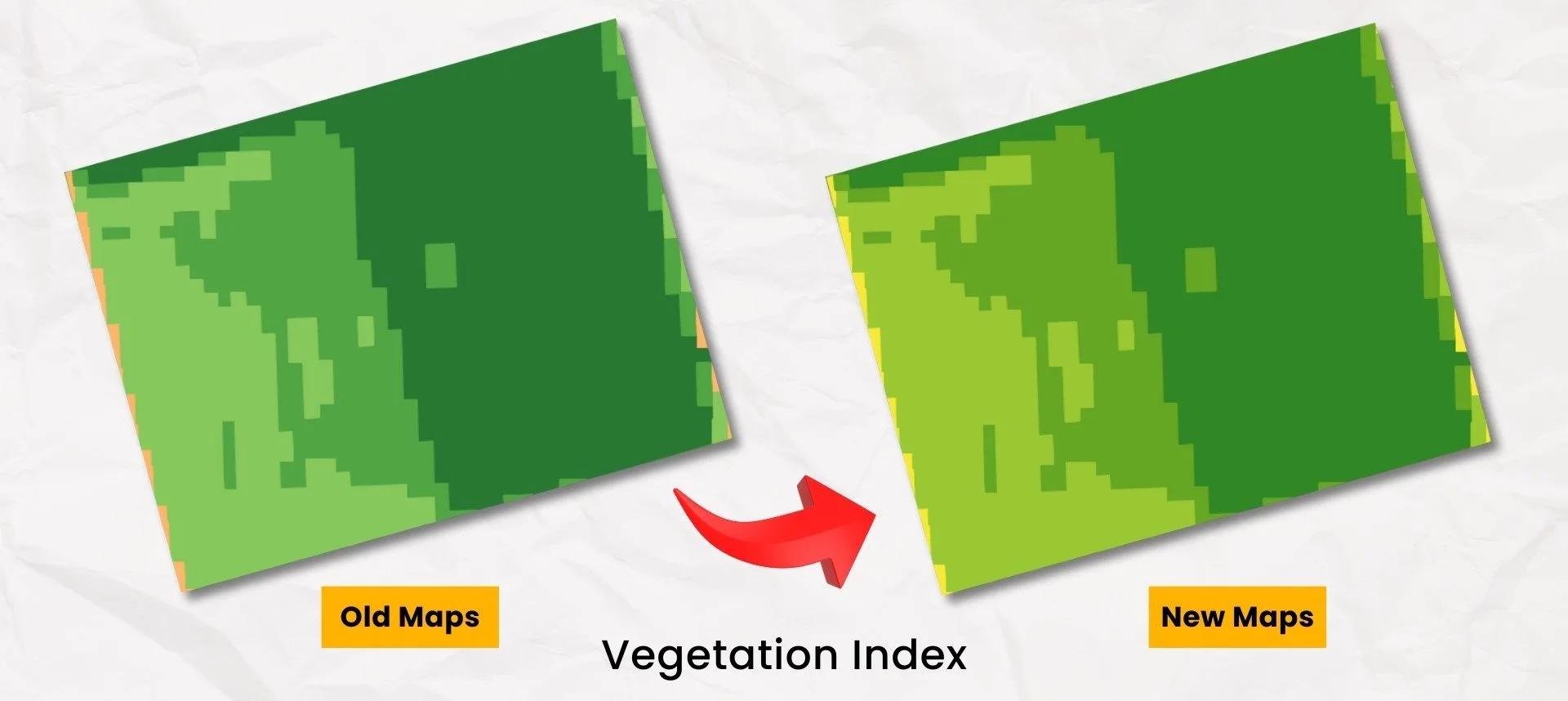Enhancing Agricultural Mapping: The Power of Color Differentiation
In the world of agriculture, effective data visualization is crucial for making informed decisions. One of the most significant advancements in this area is the use of color differentiation in mapping various agricultural indices. Recent updates to the color palettes for Dry Matter, Nitrogen, Stratification, and Vegetation Index have transformed how farmers and researchers interpret data, leading to better management practices and improved crop health.
Dry Matter: A New Perspective
Old Maps: The previous Dry Matter maps utilized a limited color palette that primarily featured shades of green and yellow. The subtle differences in color made it challenging to distinguish between varying levels of dry matter. Colors ranged from light green for low dry matter to dark green for high dry matter, often leading to misinterpretations.
New Maps: The updated Dry Matter maps have introduced a vibrant color palette that enhances clarity and visual appeal. The new gradient ranges from light yellow (#FFFFE5) for low dry matter to deep green (#014528) for high dry matter. This change allows for a more nuanced representation of dry matter levels, enabling farmers to identify areas that require attention more effectively.
Nitrogen Management: Clearer Insights
Old Maps: Previously, the Nitrogen Shortage and Uptake maps relied on a similar color palette dominated by purples and muted tones. This limited differentiation made it difficult to accurately assess nitrogen availability and uptake across different areas.
New Maps: The new color scheme for both Nitrogen Shortage and Nitrogen Uptake maps has adopted a consistent and vibrant palette. The gradient now ranges from bright yellow (#FFFFDA) for low nitrogen levels to deep blue (#091C57) for high nitrogen levels. This enhanced differentiation not only improves the visual appeal of the maps but also enhances the interpretability of nitrogen dynamics, allowing for better management of this vital nutrient.
Stratification: A Detailed Approach
Old Maps: The previous Stratification maps utilized a limited color palette dominated by soft blues and greens. The subtle differences in color made it challenging to accurately assess soil layers and nutrient distribution.
New Maps: The new Stratification maps have introduced a bold color palette that significantly enhances clarity. The updated gradient features deep reds (#9F0042) for low stratification and vibrant yellows (#FEC820) for high stratification. This change allows for clearer distinctions between different stratification levels, enabling farmers to make more informed decisions regarding soil management and nutrient application.
Vegetation Index: Vibrant Health Indicators
Old Maps: The previous Vegetation Index maps utilized a color palette dominated by shades of red, orange, and green. While functional, the colors often lacked the vibrancy needed to effectively convey differences in vegetation health.
New Maps: The new Vegetation Index maps have adopted a vibrant and dynamic color palette. The updated gradient includes bright reds (#FE3B1A), oranges (#FE7719), and greens (#147219). This vivid color differentiation allows for a more nuanced representation of vegetation health, enhancing the ability to visualize and interpret data, leading to better crop management practices.
Conclusion
The recent updates to the color palettes for Dry Matter, Nitrogen, Stratification, and Vegetation Index maps represent a significant advancement in agricultural mapping. By enhancing color differentiation, these maps provide clearer insights into soil and crop health, enabling farmers and researchers to make more informed decisions. As technology continues to evolve, the importance of effective data visualization in agriculture cannot be overstated. These improvements not only make the maps more visually appealing but also empower users to optimize their agricultural practices for better yields and sustainability.





